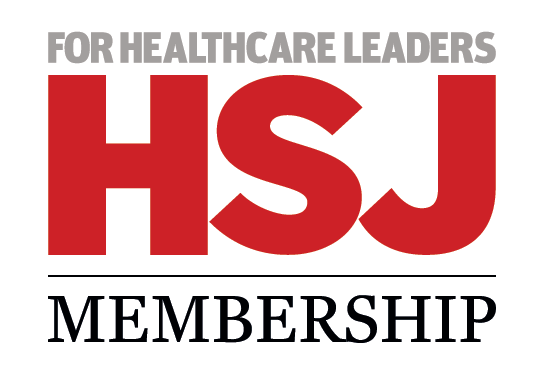Insider tales and must-read analysis on how integration is reshaping health and care systems, NHS providers, primary care, and commissioning. This week by senior correspondent Sharon Brennan.
The battle to get the government to continue discharge-to-assess funding rumbles on and, so far, there is no sign of a silver lining of hope among the dark clouds over Her Majesty’s Treasury.
Chris Hopson and Matthew Taylor, chief execs of NHS Providers and NHS Confederation respectively, spoke in unison earlier this month to warn that failure to extend the initiative beyond September will cause a “dangerous capacity squeeze… [which will] inevitably compromise patient care”.
A quick recap. Discharge to assess funding was introduced in March 2020 to get people out of NHS beds as quickly as possible, as the health service faced being overwhelmed with covid inpatients. At that point, the government was prepared to pay for any discharge package at any costs for any length of time. Inevitably, this free-for-all was curtailed.
From September 2020, the funding was distributed via a £588m national pot for up to six weeks’ funded care per person, funded through to March this year. Come late March, the government confirmed at the last-minute that the discharge-to-assess scheme would be funded through to the end of September 2021 (next month) — although now for a reduced period of four weeks’ care per person.
Despite the government’s penchant for deciding NHS funding at the last possible moment, an eleventh hour revival for this particular pot may now be unlikely.
One source following the debate closely told me extending the funding was still being debated but “it is not looking great”. They said Treasury officials’ view is the programme isn’t working well enough to justify the expense; and is worried the fund has simply underwritten some social care providers which would have otherwise gone bust. “Well, that doesn’t sound a bad thing at all,” you might well argue.
But propping up private companies is awkward for the Treasury, which must consider the impact on the public sector balance sheet. On the other hand, Treasury officials will now need to be worrying how they can unwind this support without destabilising the already precarious social care sector. It is this concern — more than the benefit to the NHS — which may determine ’discharge to assess’ funding stays.
Mr Hopson told me this week that extending the funding was “wrapped up in the debate around what happens to the second half of the [2021-22] year and beyond… [and] the mood music from the Treasury at the moment is very hard line across the board”. He said not only was the Treasury “sceptical” about it, but that wider covid costs were now being pulled from the NHS “very quickly”.
Of course, all of this is taking place in the court of Boris Johnson, a leader who relies on popularity. Amid rumours Mr Johnson recently threatened to demote his chancellor Rishi Sunak to health secretary, a recent poll by the Daily Mail found respondents thought Mr Sunak would make a better prime minister than Mr Johnson, with 42 per cent also agreeing the chancellor had better NHS policies (only 21 per cent thought Mr Johnson did).
In this uncertain political landscape, it is unclear if this means Mr Johnson is likely to play to the more hawkish tendencies of his party to maintain popularity among the Conservatives or go ahead with increasing NHS funding to assert his authority, and win points with the wider public.
What is clear is that the discharge to assess scheme is so popular across the NHS and social care that removing it would likely leave Sajid Javid in the unenviable position of having health and social care providers united against his government on a single cause such a short time into his time as health secretary.
When does collaboration become a merger?
New provider collaborative guidance from NHS England this week seemed to add little value to a system where trusts are already linking together more and more — either at their own behest, or in forced marriages arranged by NHSE regional teams.
One insider told me the document’s deeply hands-off approach seemed to confirm that it had “finally dawned on people in [NHS England] that providers are doing collaboration already. The need to set out a description for provider collaboratives is in effect trying to find a problem to solve as providers that have got their act together will be doing this anyway”.
The reality out in the land of trust governance is that the biggest consolidation in their governance/management for well over a decade is in full swing — yet this is given no real mention in the new guidance document.
There is a case study reference on Western Sussex Hospitals Foundation Trust and Brighton and Sussex University Hospitals Trust (now merged, after a brief interlude sharing a chief executive, with the Queen Victoria Hospital FT next on the menu), and a brief mention of the option of sharing leadership. Beyond that the huge transition — and the approach to pushing it via regulatory intervention and appointments powers — is not discussed.
Sir David Dalton, author of the Dalton review for the government into hospital groups, told HSJ that, since the report’s publication in December 2014, 242 sovereign trusts have become 212 and “many others are in conversation [about working more formally together] and wanting to cooperate”.
He believes the gap between provider collaboratives and mergers is “a continuum — with provider collaboratives being at the softer end and with merged trusts being at the other very hard end. In between these points are a variety of governance models, such as the shared chair/CEO model and the committees in common model.”
Perhaps it is less than transparent, then, for NHSE to not present provider collaboratives within the context of mergers. Indeed, the guidance fails to even pose the question of when a merger or shared leadership may ultimately be preferable to continued collaboration. This is especially important when one notes the speed at which all this must happen to manage the huge challenge of covid recovery, which the document says cannot happen without provider collaboration.
Source
HSJ Interviews
Source Date
August 2021

























No comments yet